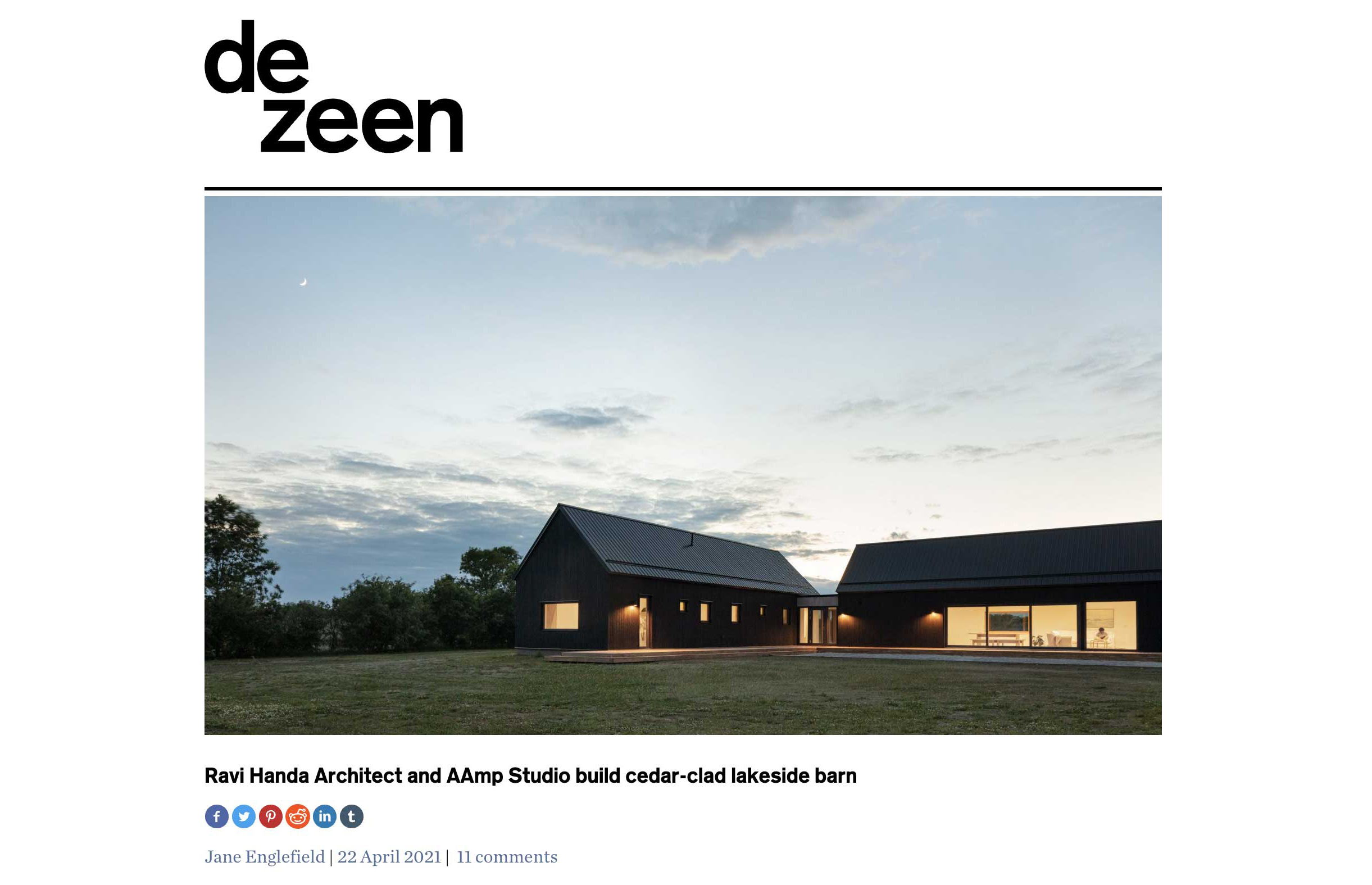
Dezeen Ell House featured in Dezeen’s round-up of barn-inspired homes
Fun to see Ell House included in an international collection of homes inspired by the barn vernacular! You can find the full feature here.
—
Ten barn-style houses with rustic and rural appeal
By Amy Peacock
From the restoration of a 200-year-old stone barn in England to a family home in Idaho that references ranch buildings, here is a roundup of 10 barn-like houses from the Dezeen archives.
Traditionally built for sheltering farm products and livestock, barns are usually found in rural areas and commonly have a simple structure with a gable roof.
They have an enduring rustic charm that has long made them popular as countryside hideaways, with a number of notable examples featured on Dezeen in the past couple of years.
Here is a roundup of 10 barn houses, including conversions of former barns into homes and new builds designed to resemble barns:
Fungarth Cottage, Scotland, by Mary Arnold-Foster Architects
Scottish studio Mary Arnold-Forster Architects designed a cluster of small barn-like buildings in Dunkeld that reference traditional farmyard structures found in the area.
Situated alongside a former ploughman’s cottage and steadings, the new buildings contain an office for the studio and a home for its founder.
Ell House, Canada, by Ravi Handa Architect and AAmp Studio
Architecture firms Ravi Handa Architect and AAmp Studio took cues from local barns when designing Ell House, a cedar-clad holiday home located in rural Ontario.
“Inspired by Prince Edward County’s rural vernacular, the gable roof and L-shape are also a technical response to the area’s prevailing south-westerly winds,” said the studios. “One wing shields the other, providing a peaceful indoor and outdoor living area that embodies the notion of shelter.”
Half Barn, Japan, by Ryuichi Ashizawa Architects
The aptly named Half Barn house by Japanese practice Ryuichi Ashizawa Architects has a timber frame and gable roof that is divided along the ridge to create a separation between indoors and outdoors.
The interior wood surfaces were left exposed as a way to complement the surrounding nature, while overhead awnings and shutters along the side of the exterior timber frame partly shield the outdoor space.
Redhill Barn, England, by TYPE
London-based architecture studio TYPE converted the dilapidated Redhill Barn in Devon, southwest England, into a modern family home where the new interventions are distinguished from the old structure.
The studio retained the barn’s 200-year-old stone walls and replaced the hipped roof with reflective aluminium sheeting to “ghost” the original roof form.
North Bank, England, by Elliott Architects
Referencing the form of a nearby farmhouse, the North Bank house in the Tyne Valley has a steep gable roof that is finished in zinc.
Designed by local practice Elliot Architects, the interior walls are covered with pale brown sealed plaster to create a rustic finish that complements the exposed wood roof structure above.
The Bigwood Residence, USA, by Mark de Reus
For his own house in Idaho, northwestern America, architect Mark de Reus created a building of two adjoining forms clad in grey-black stained spruce siding.
A two-storey gabled volume containing the main living and sleeping spaces was designed to resemble a barn, while a single-storey flat-roof volume references low-slung ranch buildings found in the region.
The Barn, England, by Pad Studio
Pad Studio chose wood reclaimed from an old barn to clad the walls, roof and decking of this house in Hampshire to help it blend in with the surrounding landscape.
“The proportions, materiality and fenestration of local farm buildings were carefully studied and reflected in the design to create a contemporary yet sympathetic scheme,” said Pad Studio. “This ensured The Barn sits comfortably in the local surroundings without becoming pastiche.”
Woodthorpe Stables, England, by Delve Architects
London studio Delve Architects transformed this 19th-century haybarn conversion named Woodthorpe Stables by stripping away additions made in the 1950s to reveal the building’s original stone structure.
The practice designed two extensions built with Douglas fir frames, which were left exposed to echo the original wooden roof beams in the barn.
The Barn, Australia, by Paul Uhlmann Architects
Paul Uhlmann Architects built this rural getaway in Pullenvale, Queensland, with a barn-like structure and glazed-gable ends.
The holiday home has a smooth curve at the roof’s apex that can be seen throughout the interior, distinguishing it from traditional barn buildings.
Morlands Farm, England, by Sandy Rendel Architects
This Dutch-style barn in southern England was previously completely open on two sides, but Sandy Rendel Architects clad it in corrugated steel to transform the building into a three-bedroom house.
“Metal-framed, barrel-vaulted Dutch barns have a distinctive appearance, structure, form and materiality and it was key to us to retain this character and aesthetic,” said Sandy Rendel, founder of the practice.

